 Software Tutorial
Software Tutorial
 Mobile Application
Mobile Application
 What material is the monitor made of? Detailed introduction: Understand the monitor panel material in one article
What material is the monitor made of? Detailed introduction: Understand the monitor panel material in one article
What material is the monitor made of? Detailed introduction: Understand the monitor panel material in one article
php editor Xinyi carefully prepared a detailed introduction article about the display panel material for everyone. As an important electronic device that we use every day, the display panel material directly affects the display effect and user experience. This article will analyze the main panel materials of monitors, including LCD, OLED and Micro LED, and discuss their characteristics, advantages, disadvantages and applicable scenarios to help you better understand and choose a monitor that suits you. Let’s take a look!
As the direct output object of the computer host, the monitor directly determines the first experience of playing games and productivity. When buying a computer host, many friends will also choose an excellent monitor to improve the use experience.
However, with the advancement of technology, more and more display panel materials are presented to everyone: LCD, LED, OLED, TN, VA, IPS and the recently very popular miniLED and Nano IPS. What are the differences between them, and what kind of monitor should ordinary users choose? What kind of monitor should gamers choose?
After reading this article, maybe you can find the answer.
1. LED and LCD
LED and OLED are two different concepts of light-emitting diodes. LED is the abbreviation of "Light Emitting Diode", also known as "Light Emitting Diode". LEDs are composed of inorganic compounds with different chemical properties. On the other hand, OLED is the abbreviation of "Organic Light Emitting Diode", which means "organic light-emitting diode". Unlike LEDs, OLEDs are composed of organic compounds. Therefore, LED and OLED are two different light-emitting devices.
LCD's full name is "Liquid Crystal Display", which means liquid crystal display. It consists of two polarizers and some other accessories.
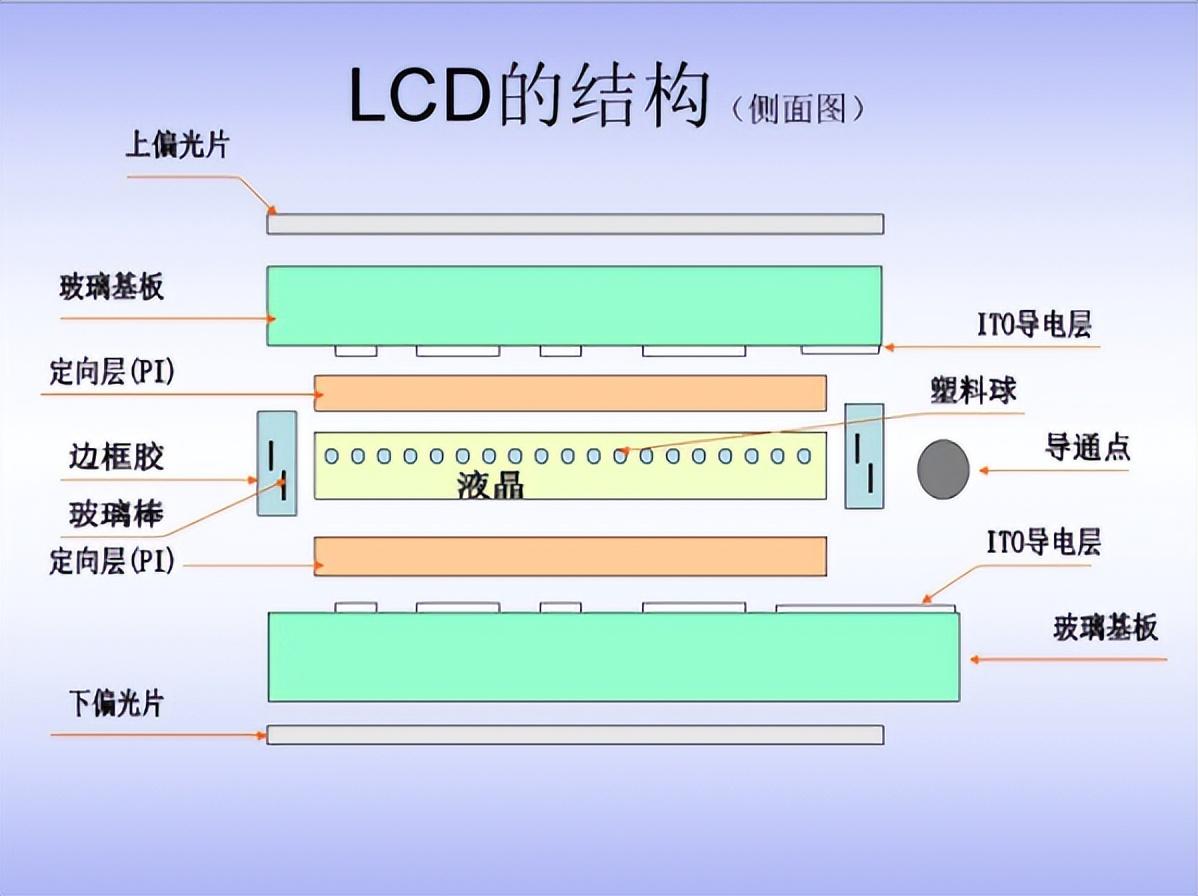

So we actually know that LCD is a liquid crystal screen, and its light source can be LED. Strictly speaking, LCD is It's a screen panel, and LED is just a light-emitting device.
2. TN panel
Advantages: response speed, refresh rate, price
Disadvantages: viewing angle, color distortion
TN stands for Twisted Nematic , called a twisted nematic panel, is low-cost (curved TN is slightly more expensive), has a wide range of applications, and is also one of the LCD displays. The price of TN panels is lower than that of IPS, VA and other panels. However, because it was launched very early, the technology is very mature, and it is widely used. It is mostly found in entry-level monitors.
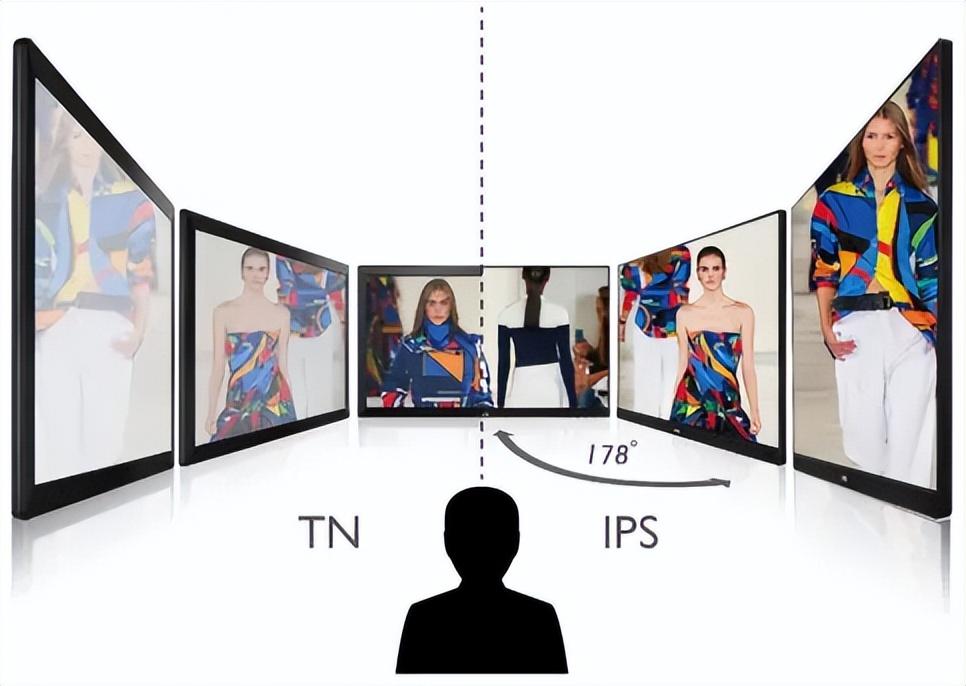

The biggest problem with the TN panel is that the viewing angle is very average. Only the front can see the whole picture, and the color cast is easy to see when looking from the side. Or turn black. Most of today's TN screens use compensation technology, which can make the viewing angle of the TN screen reach about 160°. In addition, the TN panel is what everyone often calls a "soft screen". Pressing it lightly with your hand will form water ripples around your fingers.
Although the TN panel has many shortcomings, its advantages cannot be ignored. That is because the TN panel has a lower grayscale response speed and can greatly increase the screen refresh rate, which is exactly what FPS games need. , which can achieve lower latency and screen smearing, and is loved by many FPS e-sports anchors and professional players.
3. VA panel
Advantages: high contrast, viewing angle
Disadvantages: smear, color difference
The full name of VA is Vertical Alignment, Chinese The name is a vertical alignment panel. Compared with TN panels, VA panels can provide higher contrast and relatively high color reproduction under static conditions. The improvement of flat viewing angles is very important. There are three common VA panels on the market: PMVA (Passive Matrix Vertical Arrangement), Super-MVA and Advanced MVA.
In the consumer market, the most common MVA is the last Advanced MVA. The notable feature of the VA panel is that it can well weaken the light source from the LCD display and the higher contrast of the static image. When part of the panel is lit, the non-luminous area will display a darker black color. However, unlike the non-luminous OLED, the light source of this part of the VA panel is not completely extinguished. What we see is actually the light emitted by the panel. The black color tends to be "dark grey". If the quality control of the monitor is average, we may see "light leakage" at the edges of the monitor.
The VA panel is also a soft screen, and water ripples will also appear when you press it lightly with your hand. Its contrast ratio is very high, reaching a high contrast ratio of 3000:1, and its color reproduction is accurate. The cost is higher than that of TN panels, and it is currently the panel type most used in mid- to high-end LCD displays.
4. OLED panel
Advantages: color, viewing angle, response speed
Disadvantages: lifespan, price
The full name of OLED is Organic Light-Emitting Diode, which is called "organic light-emitting diode" in Chinese. It is only one letter different from LCD and LED.
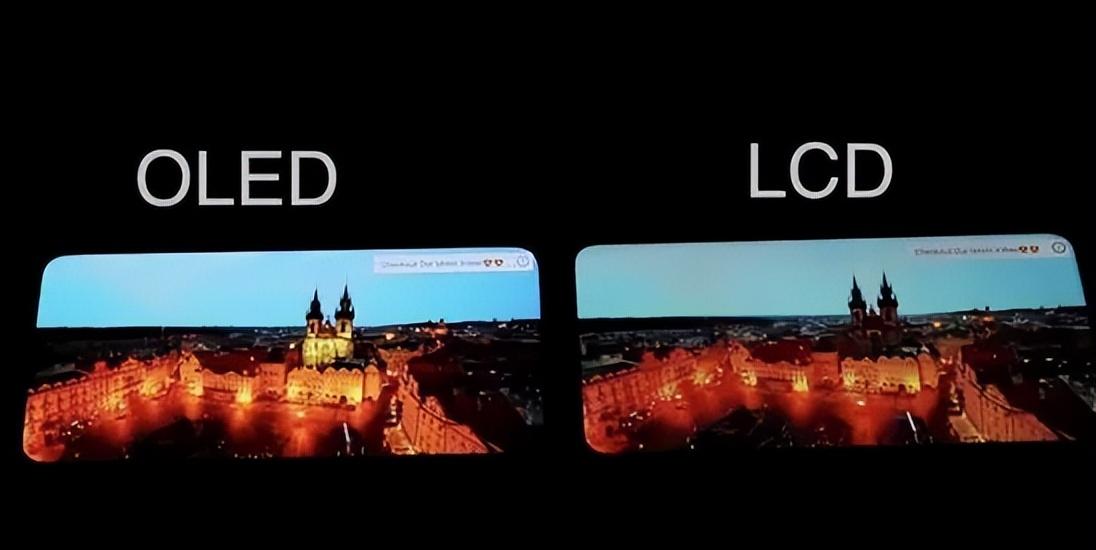

OLED produces visible light through the injection or recombination of carriers. It is a light-emitting device, but unlike LED, OLED can independently produce red, green and blue colors, and LED light emission requires the refraction of red, green and blue colors by liquid crystal molecules, so OLED has the function of independent imaging and can be used as a display panel alone. Unlike VA panels, OLED displays the purest black when black (it does not emit light when black). Similarly, OLED screens do not suffer from light leakage.
OLED lights up each pixel based on each organic molecule, and is very strong in display color and signal response speed. In contrast, there are high technical costs and power consumption costs. At present, OLED light-emitting diodes are the most mature with green light (the familiar iPhone "green screen door" before), while red and blue light are still difficult to reach the consumer market due to relatively high technical costs. There are also low yields and high maintenance costs, especially the "burn-in" problem of OLED after a long time of use, which may dissuade the vast majority of consumers.
5. IPS panel
Advantages: color performance/color accuracy/viewing angle/price/signal response speed
Disadvantages: light leakage in highlight parts/contrast
IPS stands for In-Plane Switching, and is called in-plane switching screen in Chinese. Its excellent static and dynamic color performance capabilities once made it the highest quality screen panel technology in the field of electronic display.
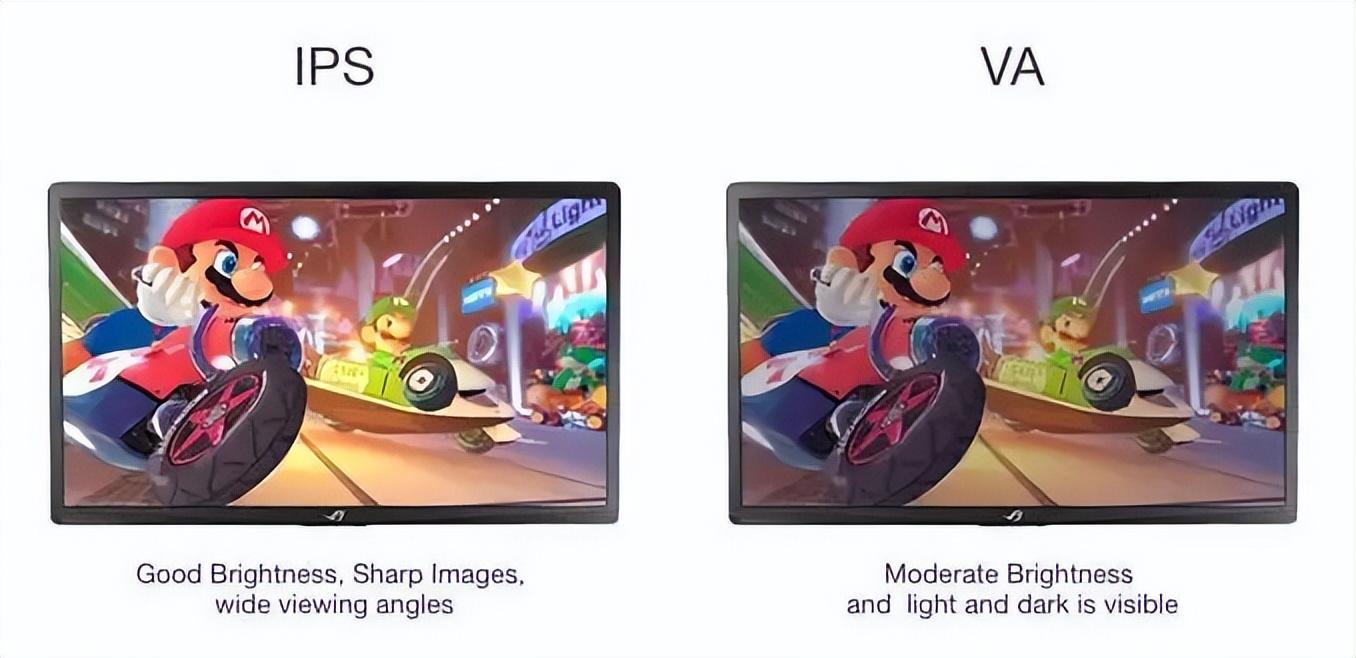

Unlike TN panels where liquid crystals are arranged vertically for display, IPS panels use horizontally arranged liquid crystal molecules to allow for a huge viewing angle. Improved, the vertical plane viewing angle can reach 178°, and there will be no color deviation when viewed from different angles. Since the viewing angle is increased but the penetration of light is reduced, in order to better display bright colors, the luminosity of the backlight must be increased, so there will be a certain amount of light leakage when used at high brightness.
The IPS panel has a unique water molecule structure, so there are no water lines or shadows when touched, and it is very stable, so it is also called a "hard screen".
In terms of color accuracy, IPS supports professional color display solutions such as Adobe RGB, with high color saturation and restoration, which is suitable for designers or users with high requirements for color performance.
In the past, IPS was criticized for poor signal response speed and contrast. However, due to the increasing maturity of technology, current IPS screens have also evolved from S-IPS, H-IPS, e-IPS, P-IPS and PLS and other versions have been continuously iterated and perfected, and the signal response speed and contrast have also been greatly improved. It is one of the configurations worthy of attention for entry-level or professional users.
Currently, the most popular Nano-IPS and FAST-IPS, which technology is better?
Nano IPS is a panel developed by LG. It mainly improves the IPS in the manufacturing process. A layer of new fluorescent material (KSF phosphor) is placed in the LED backlight of the screen, which can filter out the incoming light. The required light is required to make the output color purer, which can easily exceed 100% sRGB volume and reach 98% DCI-P3 color gamut coverage. Different from the low response speed of traditional IPS, Nano IPS improves the response speed and can basically achieve about 5ms.
FAST IPS (Fast LCD Screen) is an IPS panel launched by AU Optronics. It mainly competes with Nano IPS produced by LGD. It is a latecomer. Generally speaking, enthusiasts will mention FAST IPS. It specifically refers to AUO's panels, but for merchants, it does not specifically refer to AU Optronics' panels. Some panels from Innolux and BOE can also be called "fast LCD" (the names are marked differently). As the name suggests, FAST IPS mainly highlights the word "fast" and focuses on faster response time. It has the fastest response speed among all IPS panels and is more suitable for e-sports games than Nano IPS.
To make a brief summary, if you mainly play e-sports games and need faster response time, choose the FAST IPS panel; if you pay attention to image quality, then go directly to Nano IPS, the ceiling in the color world.
6. Summary
Choosing which type of monitor panel to buy depends largely on the intended use and purchase budget. Just in time to reach 618, I would like to recommend to you the most suitable monitor among various screens.
For most users, IPS screens will be more widely used in daily use and their color performance will be better. Therefore, when it comes to panel selection, IPS screens are generally preferred. If you are a designer or have extremely high requirements for images in your daily life, NanoIPS is a choice not to be missed. The picture performance is currently the best among IPS.
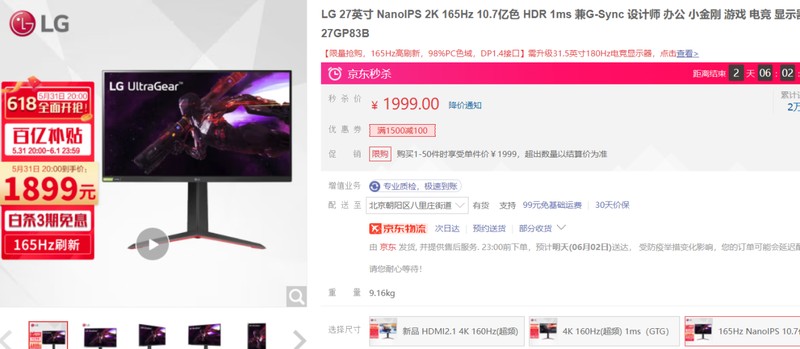

If you are a gamer, maybe a TN screen is the ultimate choice, but the best choice is FAST IPS. The picture performance and viewing angle of the TN screen are far lower than that of the IPS screen. Although the owner has an ultra-low response time, the sacrifice of picture quality is still not worth the loss for most people. Moreover, the response time of FAST IPS is basically the same as that of TN, and the picture performance and viewing angle are more suitable for daily use.
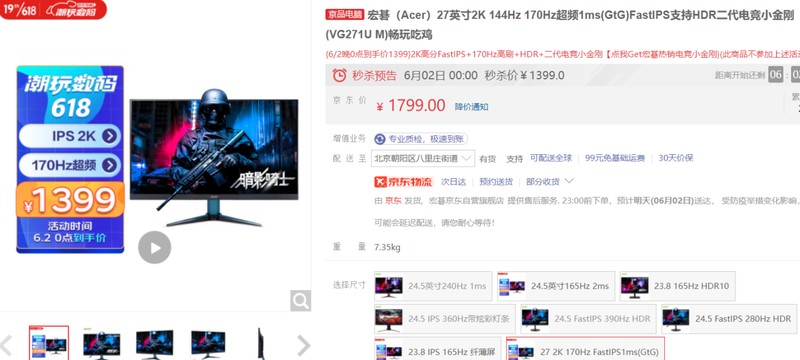

If you are a console player, then 4K is definitely unavoidable. Major console players still have very high requirements for 4K, so you might as well try the latest miniLED display technology. Whether it is HDR picture or picture performance, the appearance is better than the conventional IPS screen, but the corresponding price will also be higher. Suitable for those players with sufficient budget.
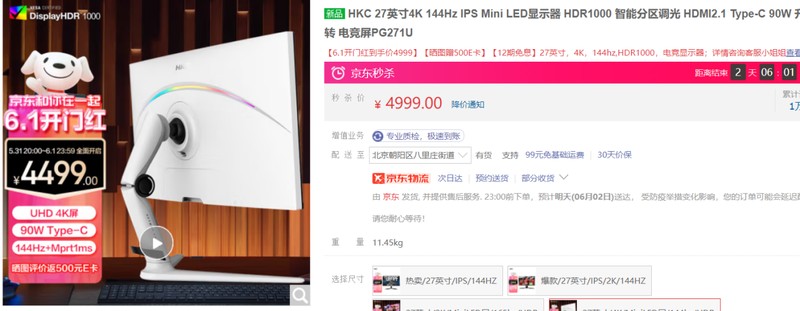

If you are pursuing both the high resolution of the console platform and the low response time of FPS games, then the Gigabyte M28U is more recommended. The FAST IPS screen with 4K resolution and 144Hz refresh rate is perfectly suitable for both console games and FPS games. Coupled with the unique KVM technology, one cable can connect multiple devices, making it more friendly for friends with laptops. And because 618, the price has brought the range of ordinary 4K monitors, which can be said to be a blow to dimensionality reduction.
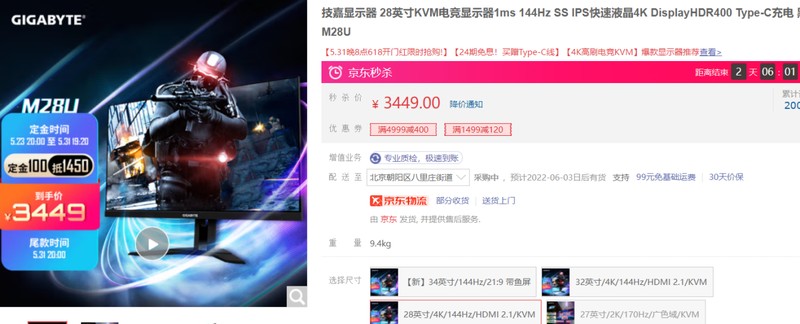

VA panels, because they are relatively soft, are mostly used in curved screens and hairtail screens, so they are suitable for those who like oversized monitors. Friends can choose this one.
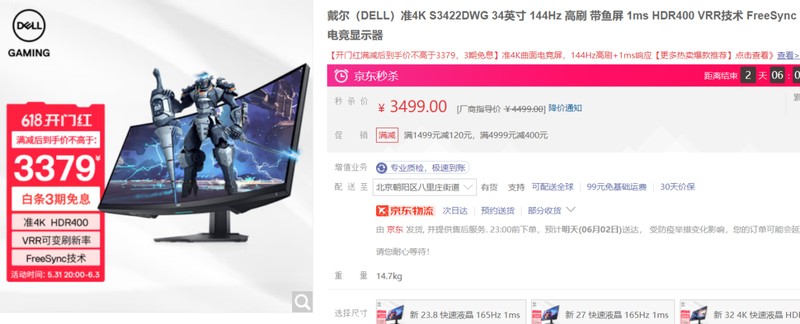

Dell’s appearance design is better than that of ordinary manufacturers. In addition, with 3 years of door-to-door service and a perfect screen guarantee, it can be extremely It greatly avoids the problem of substandard screen quality. The 21:9 ratio is also an extra pleasure to watch movies.
The above is the detailed content of What material is the monitor made of? Detailed introduction: Understand the monitor panel material in one article. For more information, please follow other related articles on the PHP Chinese website!

Hot AI Tools

Undresser.AI Undress
AI-powered app for creating realistic nude photos

AI Clothes Remover
Online AI tool for removing clothes from photos.

Undress AI Tool
Undress images for free

Clothoff.io
AI clothes remover

AI Hentai Generator
Generate AI Hentai for free.

Hot Article

Hot Tools

Notepad++7.3.1
Easy-to-use and free code editor

SublimeText3 Chinese version
Chinese version, very easy to use

Zend Studio 13.0.1
Powerful PHP integrated development environment

Dreamweaver CS6
Visual web development tools

SublimeText3 Mac version
God-level code editing software (SublimeText3)

Hot Topics
 1385
1385
 52
52
 How to solve the problem of 'Undefined array key 'sign'' error when calling Alipay EasySDK using PHP?
Mar 31, 2025 pm 11:51 PM
How to solve the problem of 'Undefined array key 'sign'' error when calling Alipay EasySDK using PHP?
Mar 31, 2025 pm 11:51 PM
Problem Description When calling Alipay EasySDK using PHP, after filling in the parameters according to the official code, an error message was reported during operation: "Undefined...
 Do I need to use flexbox in the center of the Bootstrap picture?
Apr 07, 2025 am 09:06 AM
Do I need to use flexbox in the center of the Bootstrap picture?
Apr 07, 2025 am 09:06 AM
There are many ways to center Bootstrap pictures, and you don’t have to use Flexbox. If you only need to center horizontally, the text-center class is enough; if you need to center vertically or multiple elements, Flexbox or Grid is more suitable. Flexbox is less compatible and may increase complexity, while Grid is more powerful and has a higher learning cost. When choosing a method, you should weigh the pros and cons and choose the most suitable method according to your needs and preferences.
 How to calculate c-subscript 3 subscript 5 c-subscript 3 subscript 5 algorithm tutorial
Apr 03, 2025 pm 10:33 PM
How to calculate c-subscript 3 subscript 5 c-subscript 3 subscript 5 algorithm tutorial
Apr 03, 2025 pm 10:33 PM
The calculation of C35 is essentially combinatorial mathematics, representing the number of combinations selected from 3 of 5 elements. The calculation formula is C53 = 5! / (3! * 2!), which can be directly calculated by loops to improve efficiency and avoid overflow. In addition, understanding the nature of combinations and mastering efficient calculation methods is crucial to solving many problems in the fields of probability statistics, cryptography, algorithm design, etc.
 How to open XML files with iPhone
Apr 02, 2025 pm 11:00 PM
How to open XML files with iPhone
Apr 02, 2025 pm 11:00 PM
There is no built-in XML viewer on iPhone, and you can use third-party applications to open XML files, such as XML Viewer, JSON Viewer. Method: 1. Download and install the XML viewer in the App Store; 2. Find the XML file on the iPhone; 3. Press and hold the XML file to select "Share"; 4. Select the installed XML viewer app; 5. The XML file will open in the app. Note: 1. Make sure the XML viewer is compatible with the iPhone iOS version; 2. Be careful about case sensitivity when entering file paths; 3. Be careful with XML documents containing external entities
 distinct function usage distance function c usage tutorial
Apr 03, 2025 pm 10:27 PM
distinct function usage distance function c usage tutorial
Apr 03, 2025 pm 10:27 PM
std::unique removes adjacent duplicate elements in the container and moves them to the end, returning an iterator pointing to the first duplicate element. std::distance calculates the distance between two iterators, that is, the number of elements they point to. These two functions are useful for optimizing code and improving efficiency, but there are also some pitfalls to be paid attention to, such as: std::unique only deals with adjacent duplicate elements. std::distance is less efficient when dealing with non-random access iterators. By mastering these features and best practices, you can fully utilize the power of these two functions.
 How to implement adaptive layout of Y-axis position in web annotation?
Apr 04, 2025 pm 11:30 PM
How to implement adaptive layout of Y-axis position in web annotation?
Apr 04, 2025 pm 11:30 PM
The Y-axis position adaptive algorithm for web annotation function This article will explore how to implement annotation functions similar to Word documents, especially how to deal with the interval between annotations...
 How to implement sorting and add rankings in PHP two-dimensional arrays?
Apr 01, 2025 am 07:00 AM
How to implement sorting and add rankings in PHP two-dimensional arrays?
Apr 01, 2025 am 07:00 AM
Detailed explanation of PHP two-dimensional array sorting and ranking implementation This article will explain in detail how to sort a PHP two-dimensional array and use each sub-array according to the sorting results...
 Top 10 virtual currency trading app rankings Top 10 virtual currency trading app recommendations
Mar 19, 2025 pm 05:18 PM
Top 10 virtual currency trading app rankings Top 10 virtual currency trading app recommendations
Mar 19, 2025 pm 05:18 PM
This article lists the top ten recommended virtual currency trading apps, including OKX, Binance, Gate.io, Kraken, Huobi, Coinbase, KuCoin, Crypto.com, Bitfinex and Gemini, with no particular order. These platforms have their own advantages in liquidity, security, currency selection, handling fees and user experience. For example, OKX is known for its strong liquidity and convenient user interface, Binance is known for its largest transaction volume and rich learning resources in the world, and Gate.io attracts users with its low handling fees and rich currency selection. To choose a virtual currency trading platform, you need to consider security, liquidity, handling fees, currency selection, and use



